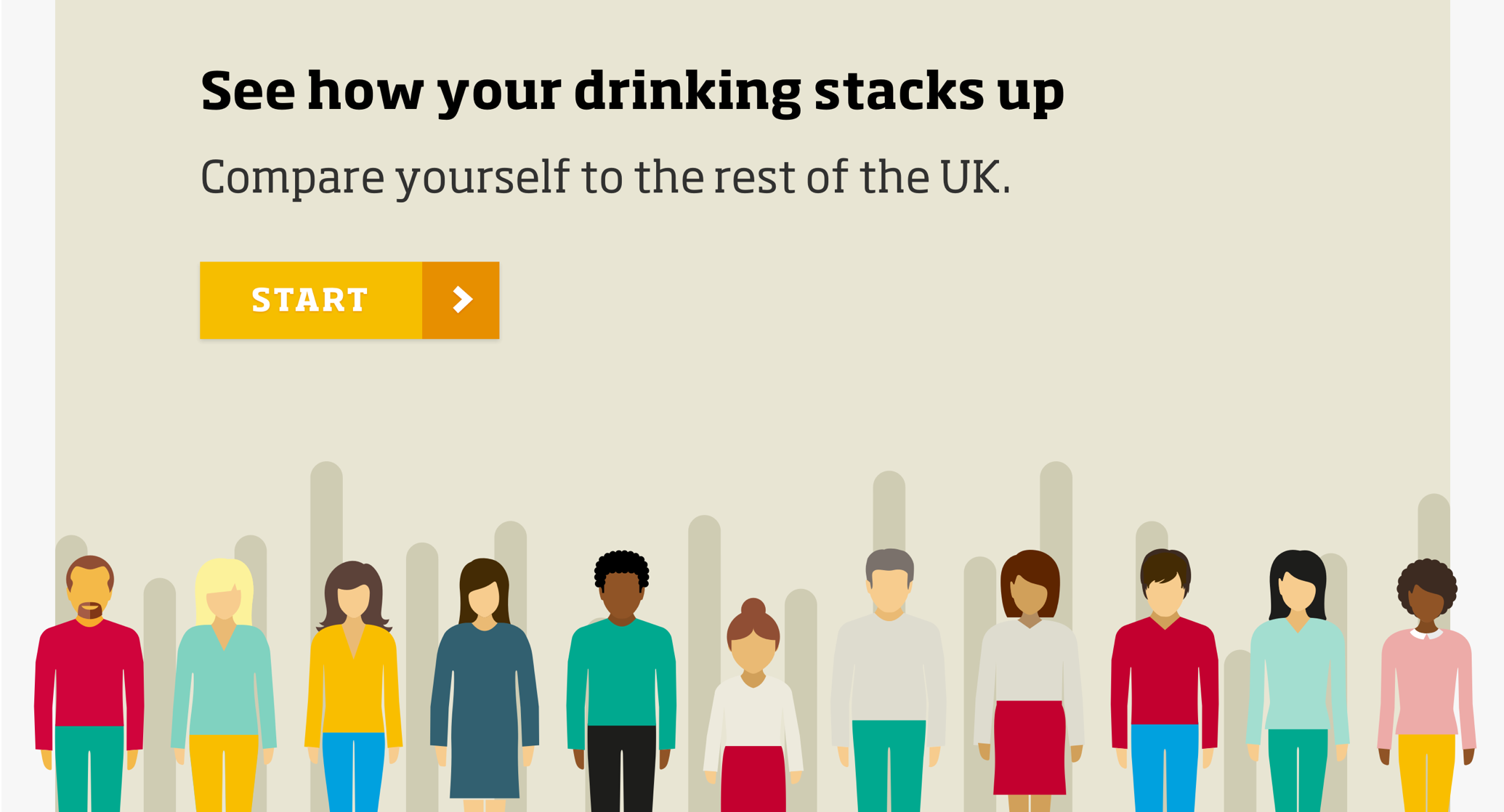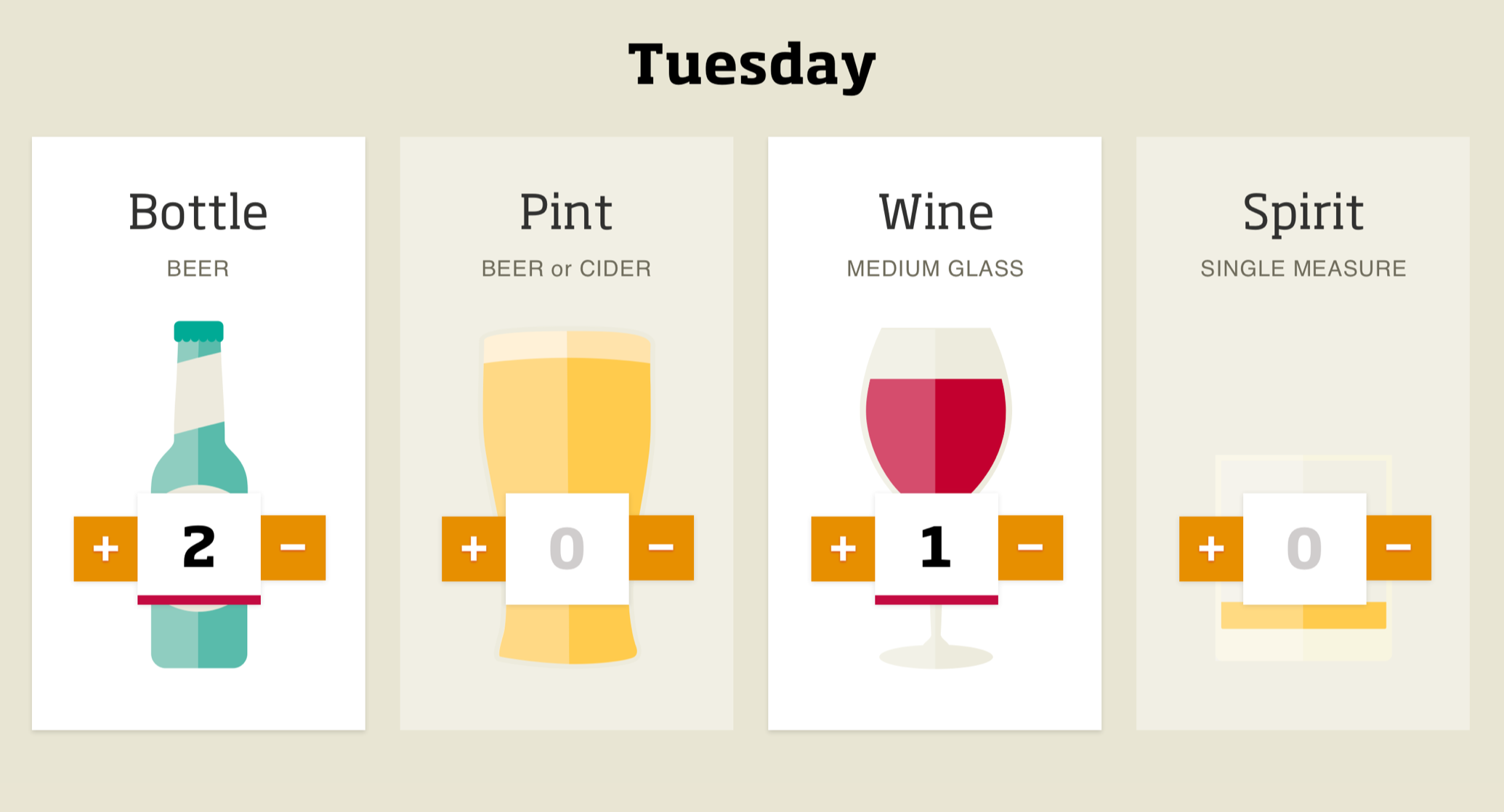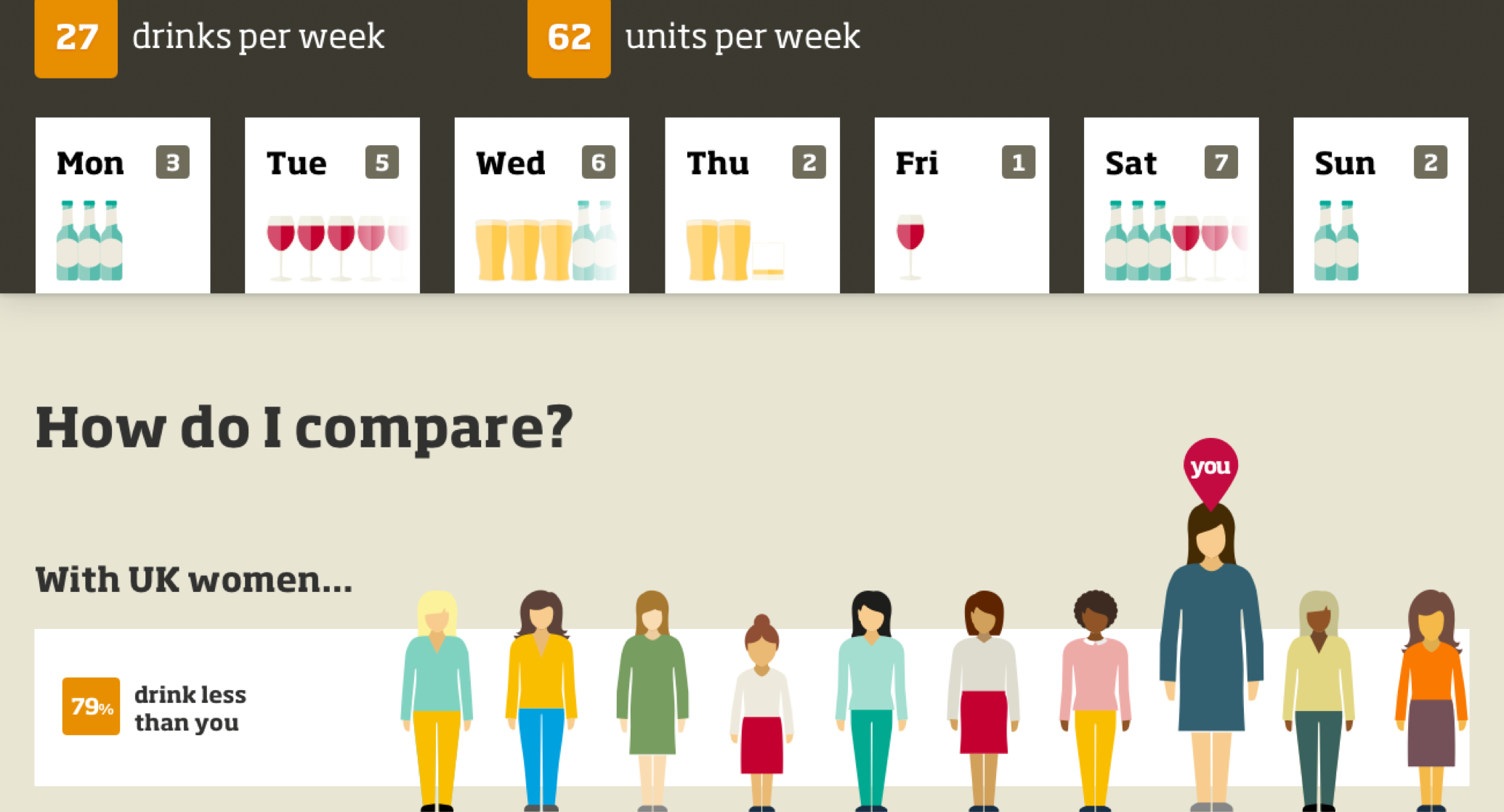Company

£5m+ donations per year

50+ employees

Charity

B2C

London, UK
Drinkaware is a charity helping people make better choices around alcohol consumption.
They provide services – both digital and physical – to assist people who feel that they may need help to change their drinking habits.
One of the most popular online tools is their DrinkCompare calculator, with over 50,000 completions each year.
It allows people to record a week’s typical drinking, and see how they compare with the nation’s average. The tool also gives users information about their calorie intake, units per week, and risks related to heart disease.
Drinkaware wanted to rework the journey through the application, make it easier to complete and provide meaningful results that would help users start their journey of change.
The tool is a key first step in bringing behavioural change to vulnerable people’s lives.
Efficient workflows
The first task was to make the survey more efficient, allowing users to answer everything quickly and not get lost in any dead ends.
The questions themselves needed a re-think. Could we condense and simplify what was being asked while re-working the flow to provide more accurate responses?
Making a tool usable for all the possible use cases needed lots of thought from the product team, and rapid prototyping of user flows.
Blog post
User flows can make or break a digital product. Learn how to ace three common flows with us 💪
Read more
Affecting behavioural change
Getting through the survey is one thing, but presenting the user with results that help them understand whether they have a problem and then prompting action was the most important goal.
Behavioural change had to come from the user understanding the issue, not being called out by an online tool, so the tone and messaging was important to get right.
Being shown that you may have a drinking problem may elicit many complex emotions. It’s important to set a tone that helps, rather than making a scary situation worse by shaming or blaming.
We created a results screen that set out simple ways to make incremental changes in everyday life. It encouraged the user to check back in down the line to monitor progress and see the improvements they had made.
Trying to affect behavioural change is hard. A major factor in increasing the possibility of success is offering simple next steps that are easy to understand and achievable to the user.


